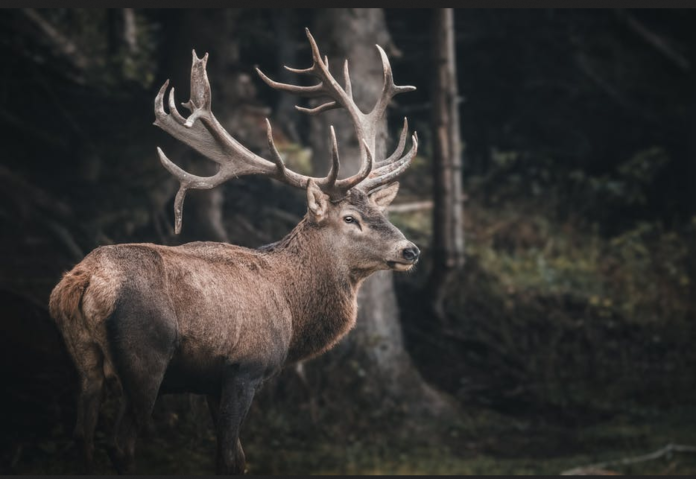Did you know that deer are so popular that eleven states have made it their state animal? If you live in America, you are probably familiar with this common mammal.
Most people know the basic facts about deer. They can identify the spotted fur on the graceful body and tall antlers. People may also be familiar with hunting these animals, as they are a popular game choice.
If you love learning about deers, you’ll love reading our top six facts about deers that you never learned in school.
1. Deer Species
Most people are familiar with the common white-tailed deer. There are over 15 million white-tailed deer in Canada and America alone!
Around the world, there are almost 50 species of deer. Every continent in the world has a population of deer except for Antarctica.
Deer species differ depending on the region they come from.
Europe
In Europe, the roe is a common deer you’ll find. This tiny deer is only two feet from the ground to the shoulder. You can find them in northern Europe, and they do well in the cold.
Another European deer is the fallow deer. When a male fallow is young, they have two short antlers that make them look like goats. The antlers grow larger as the deer ages.
Arctic and Subarctic
Of course, Santa’s trustworthy helpers, the reindeer, live in this cold climate. Reindeers have huge antlers with many prongs on them. The extra thick coat on a reindeer keeps it warm in the freezing temperatures.
Elk are another species of deer you’ll find in cold areas. These large animals almost became extinct from overhunting in the 19th century. Since then, they have repopulated and are now a thriving community.
Asia
If you are in Asia, you may see the petite tufted deer. They get their name for a small tuft of black hair on their heads. They grow short tusks instead of antlers.
The Indian muntjac is another member of the deer family, but they look different from the deer found in North America. These little deer eat eggs and carrion along with grasses.
The sambar deer can grow up to 500 pounds. You’ll find this deer in the tropical regions of India. If predators try to eat them, they’ll use their strong swimming skills to get away.
South America
You can only find the taruca deer in the Andes Mountains. These small deer are light brown with white fur around their tail, head, and neck. You can see them grazing on grasses in higher elevations.
The pudu deer are the smallest species of them all. They grow to be about a foot long when they are full-sized. You can find these deer mainly in Chile.
North America
The white-tailed deer has a white mark under their tails, not a white tail at all! These deer are about four feet from the ground to shoulder and 300 pounds. Their expressive eyes will stare you down if you get too close.
You can find moose in colder climates as well. This species is the biggest type of deer you can find. The wide, impressive antlers make this breed hard to miss.
2. What Do Deers Eat
The diet of a deer depends on where the deer are living. Most deer are herbivores and eat about eight percent of their body weight daily in greens.
A deer loves fruits, plants, and grass. If you have a garden, you may have had a deer try to snack on the growing leaves and vegetables. Most deer aren’t picky about their food and eat whatever foliage is available.
3. Amazing Antlers
Deer antlers are an amazing feature of many species of deer. Buck antlers are the world’s fastest-growing tissue. A buck sheds its antlers once a year and immediately starts growing them back.
When antlers mature, they develop a velvety covering. This deer antler velvet helps the blood get to the antler to speed up the growing process. The velvet gets rubbed off before breeding season.
The older a deer is, the bigger its antlers get. Deer use these points to compete for female deer during mating season. Bucks also use their antlers to show dominance.
4. Deer Communication
Although you can’t talk to a deer, they have a complex form of communication. They snort and grunt if they want to get another deer’s attention.
Deer also use their body as a way to communicate. A deer’s posture can change depending on its mood. For example, they will raise their tail if they feel threatened.
Another way that deer communicate is through their sense of smell. Most deers have scent glands in front of their eyes and behind their hooves. They can transfer their unique smell by rubbing up against something.
5. Baby Fawns Don’t Smell
One of the most interesting deer facts is that new baby deers don’t have a smell. This lack of scent is essential as it keeps predators away.
Mother deer will care for their babies for the first year or two of their lives. They feed them and keep them protected. The bucks don’t take any part in the raising of the fawns.
6. Domesticated Deer
Although it may be fun to have your very own Bambi, deer wouldn’t make a good pet. A deer can carry disease and be aggressive if they feel threatened.
Oh Deer: These Facts About Deers Shows How Amazing They Are
Although there are millions of animals worldwide, the deer is one mammal most people are familiar with. Knowing some facts about deers shows how interesting of a species they are!
A deer won’t be interested in wearing clothing, but you probably are! Check out our fashion articles for some wardrobe inspiration today!










